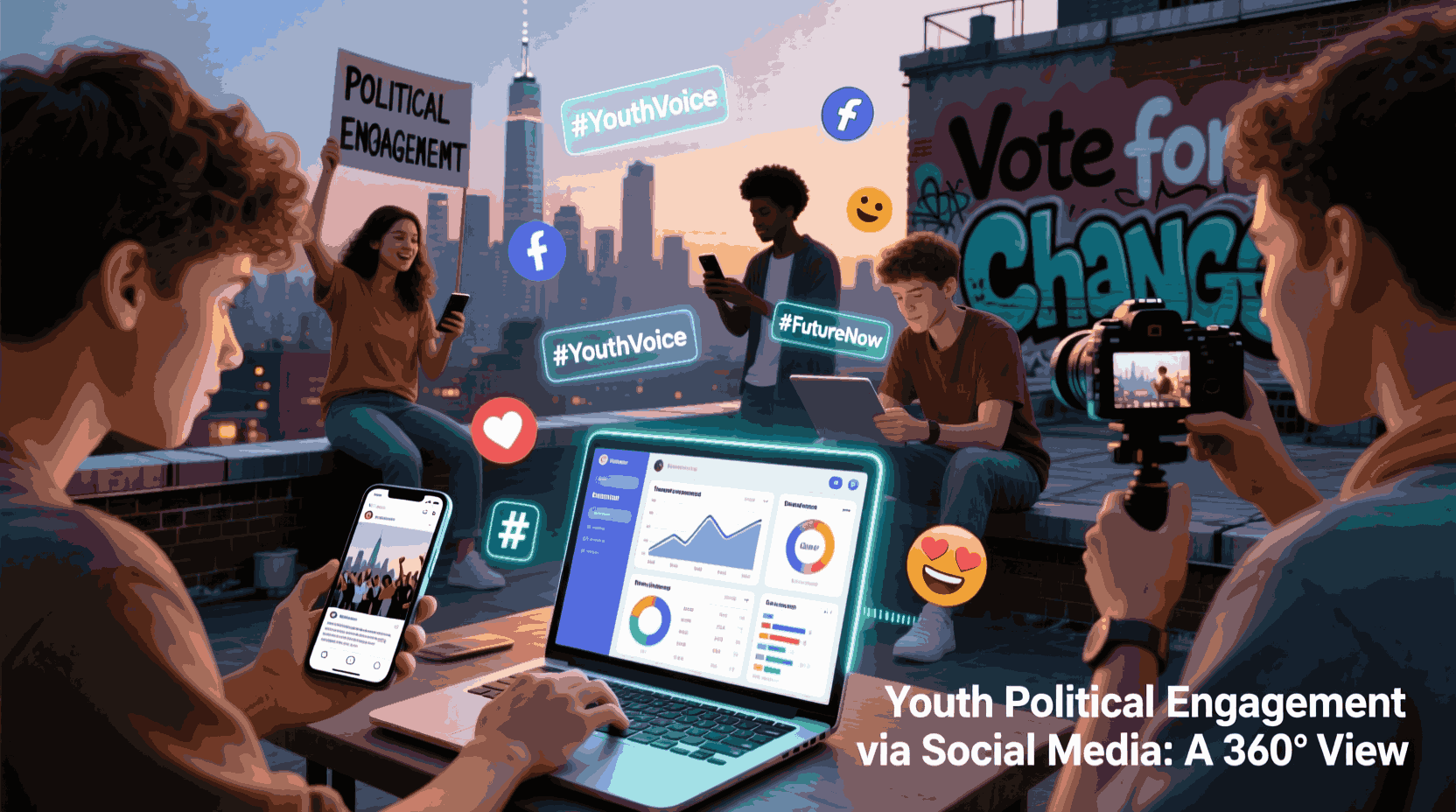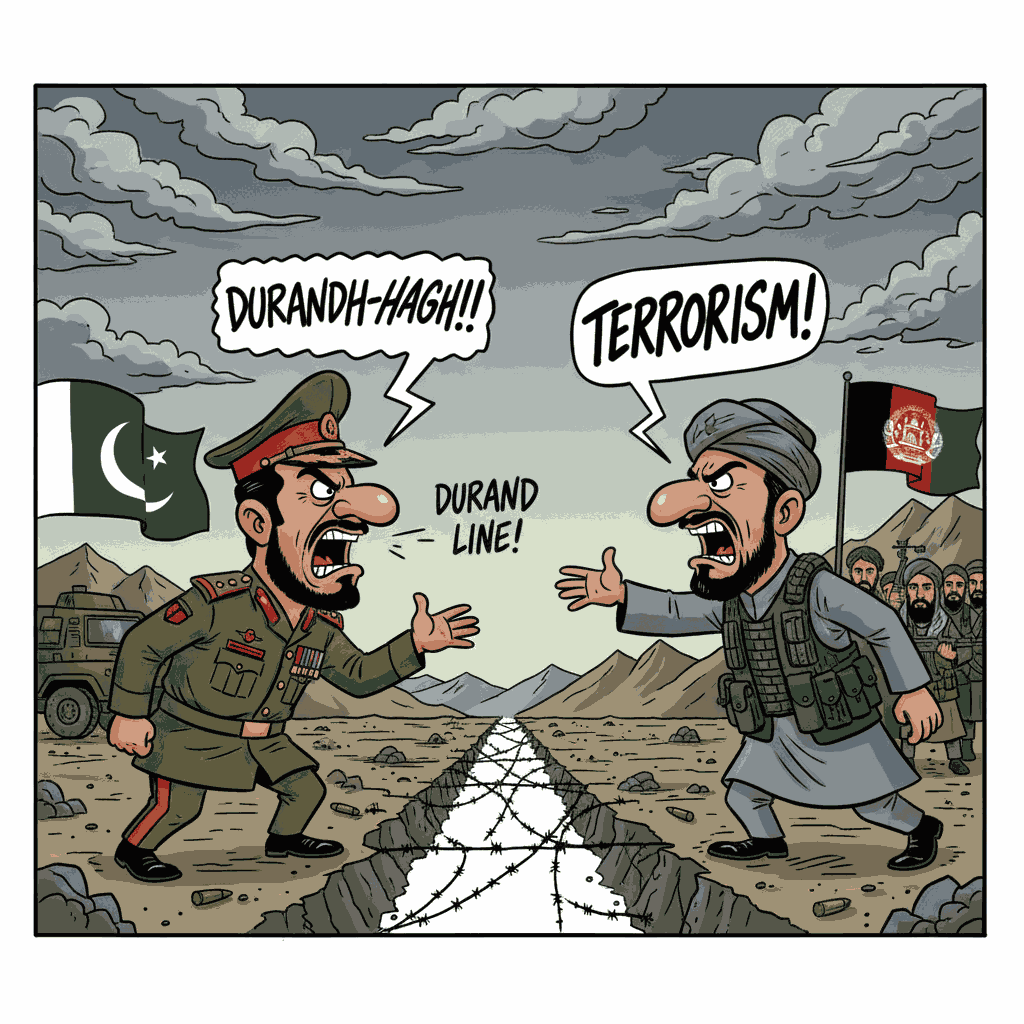1. What Do We Mean by “Youth Political Engagement via Social Media”?
- Youth: Often defined as people aged roughly 15-30, depending on data source or country.
- Political engagement: Can include voting, activism (online or offline), discussions of public issues, signing petitions, attending rallies/protests, contacting representatives, civic volunteerism.
- Social media: Platforms like Facebook, Instagram, TikTok, Twitter/X, YouTube, WhatsApp, Discord, etc. Also includes features like live streaming, memes, hashtags, stories, reels, comments, shares.
Engagement can be:
- Online only (liking, sharing, commenting, posting)
- Offline spillover (from online discussions to protests, voting, volunteering)
2. Why Does It Matter?
- Social media gives youth a voice, often when other channels are inaccessible.
- It can lower barriers: no need for physical travel, large financial resources, or traditional gatekeepers.
- It accelerates spread of information, mobilization, and awareness of issues.
- It shapes political culture: which issues are seen as “urgent,” how young people expect to be engaged.
- It has implications for democracy: participation, accountability, representation.
3. Data & Trends: What Research Tells Us
Here are findings from recent studies illustrating trends, effectiveness, demographic differences, etc.:
| Study / Source | Key Findings about Engagement via Social Media | Notes on Offline Impact, Demographics |
|---|---|---|
| Casual Social Media Use among the Youth (Barati, 2023) | Online political participation is significantly boosted by casual social media use; offline participation (voting, protests) shows small or negligible effect in some models. arXiv | Suggests “slacktivism”—lots of online activity, less translation into offline action. |
| Youth Engagement in Politics Through Social Media: Political Communication Tactics | Awareness of political tactics + active social media engagement strongly predict youth political participation. policyjournalofms.com | Users of Facebook, Instagram, TikTok etc.; both urban and semi-urban youth. |
| The Impact of Social Media and Political Participation on Political Efficacy of Youth in Pakistan | Social media use is positively correlated with political participation and political efficacy. jmcd-uok.com | Focus on university students; suggests social media builds sense that one can have influence. |
| The Impact of Social Media on Political Engagement Among Urban and Rural Youth (Indonesia) | Urban youth engage more in political content on social media; rural youth less, due to access constraints. Duration of use matters. scieclouds.com | Highlights digital divide: access, platform familiarity are key. |
| Attitudes Toward Social Media Versus Voting Among Adolescents in Chile | After the 2019 social uprising, more adolescents say social media is more effective than traditional voting for voicing demands. MDPI | Suggests crisis or heightened political environment shifts behavior/perceptions. |
4. Mechanisms & Pathways: How Social Media Leads (or Fails to Lead) to Engagement
Some of the ways that social media fosters youth political engagement, and where it falls short:
Pathways to Engagement
- Information & Awareness: Young people learn about political issues, civic rights, elections via posts, videos, live streams.
- Discussion & Debate: Comment threads, forum communities, Discord or group chats enable discussion.
- Mobilization & Organization: Hashtags, viral campaigns, calls-to-action (protests, petitions), sharing event details.
- Identity & Expression: Youth define their identity via political stance, group membership (e.g. climate activism, gender rights).
- Peer Influence: What friends, peer groups share influences what youth see as relevant or “trendy” to engage with.
Why the Spillover to Offline Engagement Is Mixed
- Online action (liking, sharing) is easy but less “costly” than attending rallies or voting.
- Misinformation, echo chambers distort perceptions, can discourage action.
- Digital inequality: access to devices, stable internet, digital literacy differ across geography, income.
- Fatigue and performative activism: engagement may be superficial.
5. Regional / Global Comparisons & Case Studies
| Region / Country | Youth Engagement via Social Media – Key Features | Notable Examples |
|---|---|---|
| South Asia (India, Pakistan, Nepal, Bangladesh) | Very high rate of youth using social media; parties & movements use hashtags, influencer content; online protests & memes are powerful tools. Digital divide remains. | In India, Election Commission’s outreach (like SVEEP) has begun using social media for youth voter education; movements like #FarmersProtest, anti-CAA protests used social media extensively. (See The Role of Youth and Social Media in Indian Elections) RSIS International |
| Latin America (Chile, etc.) | During crises or social movements, youth prioritize social media over traditional channels. Increased view that social media can express grievances more directly. MDPI | |
| Pakistan | Social media usage among young people improves political efficacy and participation: they feel more capable of influencing civic affairs. jmcd-uok.com | |
| Finland / Europe | “Nano-participation”: liking, sharing, commenting are common among youth. Even small acts are meaningful and widespread. Taylor & Francis Online |
6. Risks, Challenges & Negative Effects
While there are many positives, there are also serious risks and barriers.
| Challenge | Description |
|---|---|
| Misinformation & Fake News | Political content not always fact-checked; rumors spread. Can mislead youth. |
| Echo Chambers & Polarization | Algorithms tend to show content aligned with existing beliefs; reinforcing divisions. |
| Digital Divide | Urban vs rural; rich vs poor; lack of device/internet or digital literacy limits participation. |
| Superficial Engagement (“Slacktivism”) | Lots of “likes” or shares but less offline action (voting, protest). |
| Algorithmic Bias & Manipulation | Political actors can use bots, paid influencers; trending features can be gamed. |
| Online Harassment & Safety | Youth may face trolling, harassment, or political backlash. Can discourage voices. |
| Mental Health Impacts | Overexposure to conflict, negative content, or toxicity increases stress. |
7. Techniques & Best Practices for Effective Youth Engagement
If you are a youth group, NGO, political party, or policy body wanting to increase youth engagement via social media, here are what research and documented experience suggest:
- Use interactive content: polls, quizzes, live sessions, stories or reels.
- Use peer influencers who are trusted by youth in a region.
- Localize content: use local languages, address local issues.
- Ensure ease of access: low bandwidth content, offline resources, platforms youth already use.
- Encourage critical thinking & media literacy. Teach youth to verify sources.
- Combine online with offline efforts (e.g. online discussion → local meeting / event / campaign).
- Transparently respond: allow youth to feedback and see responses from political actors.
- Ensure safe spaces for dialogue. Establish moderation against hate/harassment.
8. Policy / Institutional Support & Recommendations
Institutional measures can substantially help improve and sustain youth political engagement via social media:
- Civic education curricula: integrating digital citizenship, media literacy in schools and colleges.
- Government platforms: official social media handles that are responsive, youth-friendly, transparent.
- Regulation of platforms: combat misinformation; require transparency in political advertising; data protection.
- Funding / grants for youth-led digital civic tech tools, online platforms, mobile apps.
- Bridging digital access gaps: ensure broadband & internet access in rural / underserved areas; subsidized devices.
- Partnerships: between government, NGOs, social media companies to co-create youth-centred platforms.
- Monitoring & research: regular survey data on youth political behavior; track offline spillover; understand which tactics work best.
9. FAQs
Q1. Does online engagement via social media lead to voting or offline political action?
Research shows mixed results. Some studies find strong correlation; others find that many youth interact online (comment/share) but do not translate these into voting or protesting. arXiv+2SAGE Journals+2
Q2. Are there differences between urban and rural youth?
Yes. Urban youth typically have better access to devices / internet; more exposure; more participation in online politics. Rural youth face access, connectivity and literacy barriers. scieclouds.com
Q3. What social media platforms work best for political engagement?
It depends by region: Facebook, Instagram, Twitter/X are common; TikTok is growing fast in many countries. Discord and WhatsApp are used for private / group organizing. The choice of platform matters for content style, reach, moderation.
Q4. How significant is misinformation risk among young people?
High. Because youth often rely on social media for news, but verification skills vary. Misinformation spreads fast via shares and groups. Platform policies, fact-checking initiatives, and digital literacy are essential to mitigating this.
Q5. What are examples of successful youth mobilisation via social media?
- Movements in South Asia (India’s anti-CAA protests; #FarmersProtest) used social media to organize, share updates, reach wider audiences. (See The Role of Youth and Social Media in Indian Elections) RSIS International
- Chile’s youth after 2019 uprising used social media to amplify demands. MDPI
Q6. What should youth do to engage more effectively?
Be consistent and creative, use multiple channels, fact-check, network with others, make use of local issues, combine online and offline, ensure safety, stay aware of policies / rules on political speech.
Conclusion
Youth political engagement via social media is a powerful force reshaping how democracies function. It offers new opportunities for participation, expression, mobilization, and accountability. But it is not a panacea: translating digital activity into real political power requires overcoming access inequality, misinformation, and structural barriers.
Effective engagement involves not just posting or sharing, but creating spaces for discussion, critical thinking, mutual learning, and ensuring youth voices are heard by institutions. Policymakers, political parties, educators, and platforms all have roles to play in nurturing that potential.

